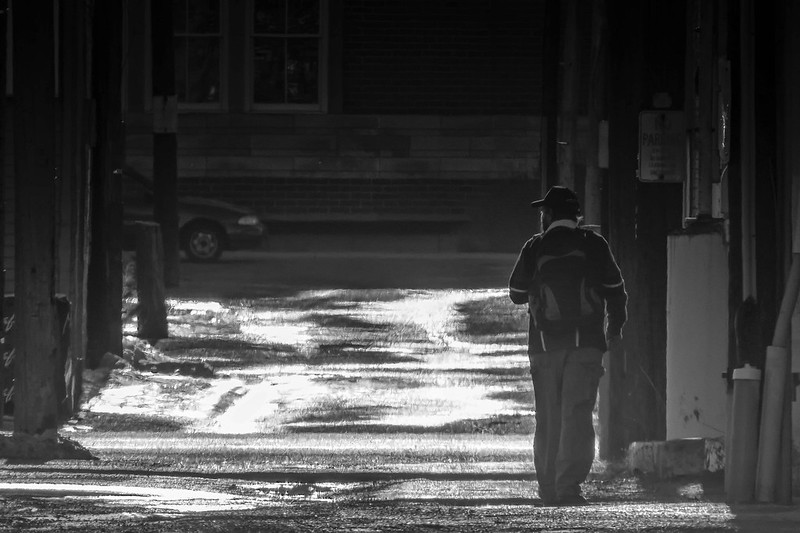This week’s top three summaries: R v Way, 2019 ABQB 271, R v Newsham, 2019 BCCA 126, and R v Elson, 2019 ABPC 89.
R v Way (ABQB)
[Apr 17/19] Jury Selection - Advance Vetting of the Jury Array - Access to Jury List - 2019 ABQB 36 [Peter Michalyshyn J.]
AUTHOR’S NOTE: In the age of social media profiles, the various platforms people choose to put their private thoughts on have become a treasure trove of information for police, prosecutors and defence lawyers alike. While peremptory challenges to jurors still exist, this material can now be used to provide counsel with an informed position on how to exercise these challenges beyond what we are traditionally provided (name, occupation, visual appearance at jury selection & 5 seconds to decide). An informed position based on views of subject matter or other things that might impact a juror's partiality between the Crown and defence in a given case is preferred. With the potential disappearance of peremptory challenges working it's way through the Senate, this ability is even more important. The expectation of this author is that there are many applications on the horizon to expand the ability of trial counsel to challenge for cause based on particular partiality to replace the lost ability of peremptory challenge to simply remove people without an explanation. Social media profiles can be a useful tool in this to justify other types of questioning of potential jurors for challenge for cause applications.
Pertinent Facts
"The accused Gift Way applies for an order that the Internal Direction — to the extent it allows he and his counsel access to a jury list only the morning of jury selection, except on application breaches his rights under the Canadian Charter of Rights and Freedoms." (Para 1)
"Mr. Way's application seeks a finding that the Internal Direction is arbitrary and/or, alternatively, violates trial fairness, in violation of ss 7 and 11(d) of the Charter. Mr. Way also seeks a direction that he and his counsel have access to a jury list within a reasonable time before jury selection, specifically not less than five days prior to jury selection. For reasons which follow, Mr. Way's application is allowed." (Para 2)
"....in the matter of R v Way, involving a challenge for cause, about 1,200 to 1,500 jury summons will issue, with a "guesstimate" of about a 10 per cent return rate, all things considered." (Para 26)
Charter s.11(d) - The right to an Impartial Jury - Timing of Receipt of Jury List
"Mr. Way argues that the right to an impartial jury includes the right to take lawful steps to ensure that impartiality. Mr. Way argues there is ample authority that an accused through counsel is entitled to vet individuals on a jury list. He argues it is unnecessary in this case to consider limits on vetting that do not already exist in law and in professional Codes which govern counsel's conduct. He argues that, without more, the court should assume that counsel will conduct themselves in accordance with the law and their professional obligations." (Para 29)
"I agree with Mr. Way's submissions through counsel that his right to an impartial jury includes his right to take lawful steps to ensure it is an impartial jury. And that by restricting access to a jury list until the morning of jury selection, the court's Internal Direction interferes with that right, and does so in a manner that breaches Mr. Way's rights under s 11(d) of the Charter." (Para 42)
"The authority of R v Teerhuis-Moar, 2007 MBQB 165 (CanLII), 2007 CarswellMan 285 – while arising from a different legislative scheme – is as close to on-point authority as any of the many cases argued before me on this application." (Para 44)
"In Teerhuis-Moar, Monnin CJQB (as he then was) decided a question similar to what I have to decide. It was noted that s 29 of Manitoba’s Jury Act, CCSM c J30, permitted disclosure of the names on juror lists five days before the sitting of Court for which it had been prepared. However, a practice had developed permitting access to a jury list only the morning of jury selection, and to request it not leave the courtroom." (Para 45)
"And at para 117, wherein he also noted that the accused’s application was simply:
…an attempt to obtain as much information as possible to ensure that if partiality could be gleaned from the information on the list, it could be raised at an early stage of the proceedings and not after a juror had been empanelled. There are valid concerns respecting the privacy and safety of prospective jurors which limited distribution of the list, both as to time and place, will address. On the other hand, the ability of an accused to have access in a timely fashion to the list of potential jurors in order to make a meaningful assessment of potential partiality is also a valid concern.
[118] Distribution of the list to counsel within five days of trial appears to be a reasonable compromise. It is one which is followed in many other jurisdictions in Canada in a similar fashion:
• Ontario’s Jury Act, s. 20 – inspection of the list by accused or a lawyer 10 days prior to sittings;
• Newfoundland’s Jury Act, s. 14 – the list is open to the public;
• Nova Scotia’s Jury Act, s. 11 – the list is available no more than eight and not less than four days before sitting;
• Saskatchewan’s Jury Act, s. 12(2) – the jury list for each sitting is open to the public." (Para 45)
Charter s.11(d) - The right to an Impartial Jury - Juror Vetting
"Without attempting to be exhaustive, there are two obvious examples of how the results of counsel's vetting could at least arguably be used." (Para 53)
"The first example is of vetting which reveals that a prospective juror is disqualified from service under the Jury Act. Counsel informed of a prospective juror's disqualified status would be obliged to bring that information to the attention of counsel opposite and presumably thereafter, to the court." (Para 54)
"The second example is of vetting that may inform a party's use of peremptory challenges during the jury selection process." (Para 55)
"I am not persuaded to impose a restriction on counsel that a list may not be used to attempt to determine the addresses of prospective jurors." (Para 59)
"Read in context, I do not agree that the scheme of ss 8(4) and 8(6) [of the Jury Act] itself works to prohibit a party represented by counsel from determining the addresses of prospective jurors." (Para 62)
"On March 21, 2019, I directed that a jury list would be provided five 'business' days ahead of the date fixed for jury selection. 'Business days' are, equally, 'juridical days' — days on which the law courts are open." (Para 69)
"My decision does not turn on the nature of the jury selection: that the jury selection in Mr. Way's case in a challenge for cause is of no consequence." (Para 70)
"My decision does turn on Mr. Way's status as a represented accused. Different considerations and requirements may apply if Mr. Way becomes self-represented for any reason at any point at least prior to the completion of the jury selection process." (Para 71)
Author's Note: specific conditions of release of the list are found at para 72 of the decision.
R v Newsham (BCCA)
[Apr 15/19] Principled Exception - Statement of the Unsavoury Witness with a Motive to Fabricate - 2019 BCCA 126 [Reasons by Griffin J.A., Fitch J.A. and Hunter J.A. Concurring]
AUTHOR’S NOTE: The overhaul of the Principled Exception in Bradshaw continues to reverberate through the justice system. Here, the statement of a robbery participant against another robber was admitted even though he could not be cross-examined. He claimed a loss of memory. Although he gave a believable account, the problem was that corroboration of his account had to be aimed at his motive to lie (a desire to place blame on the accused as opposed to himself). The trial judge used a number of factors that failed to distinguish between the witnesses participation in the robbery and his knowledge of who else may have participated in a way that took into account his motive to displace responsibility from himself.
Pertinent Facts
After an attempted robbery, witnesses identified a truck in which robbers made their get-away. This led police to Mr. Buxton. (Para 1-2)
Mr. Buxton's home was search and a bag with clothing and weapons similar to those used the robbery were found (Para 3)
"In a police interview the next day that was video and audio recorded, Mr. Buxton admitted that he was the person who drove the get-away truck. He identified the appellant as the attempted robber. Mr. Buxton portrayed himself in the statement as an innocent dupe who had no idea his passenger was planning to rob the liquor store." (Para 4)
At Newsham's trial "Mr. Buxton claimed to have no recollection of the events of the day of the attempted robbery, blaming his poor memory on his addiction to methamphetamines." (Para 5)
After a voir dire, the trial judge admitted the video recorded statement of Buxton under the principled exception to the hearsay rule and convicted Newsham. (Para 6-7)
The Principled Exception after R v Bradshaw
"As was reiterated in Bradshaw, threshold reliability is established when the hearsay “is sufficiently reliable to overcome the dangers arising from the difficulty of testing it”: at para. 26. These dangers arise largely due to the lack of an opportunity for contemporaneous cross-examination of the declarant: Bradshaw at para. 26. The hearsay dangers can be overcome and threshold reliability established by showing that: (1) there are adequate procedural substitutes for testing truth and accuracy (procedural reliability); or (2) there are sufficient circumstantial guarantees that the statement is inherently trustworthy (substantive reliability). The two approaches may work in tandem, but care must be taken to ensure that a combined approach does not lead to the admission of a statement with insufficient procedural safeguards and inadequate circumstantial guarantees of trustworthiness: Bradshaw at paras. 27, 32." (Para 13)
"The majority set out a four-part test for determining whether corroborative evidence is of assistance in assessing substantive reliability: [Bradshaw at para 57]
In sum, to determine whether corroborative evidence is of assistance in the substantive reliability inquiry, a trial judge should
1. identify the material aspects of the hearsay statement that are tendered for their truth;
2. identify the specific hearsay dangers raised by those aspects of the statement in the particular circumstances of the case;
3. based on the circumstances and these dangers, consider alternative, even speculative, explanations for the statement; and
4. determine whether, given the circumstances of the case, the corroborative evidence led at the voir dire rules out these alternative explanations such that the only remaining likely explanation for the statement is the declarant's truthfulness about, or the accuracy of, the material aspects of the statement." (Para 15)
"the judge erred in his assessment of both procedural and substantive reliability." (Para 17)
"In our view, the judge erred in fact and in law in concluding that the appellant had a "full opportunity" to test the material portions of Mr. Buxton's statement. While Mr. Buxton was cross-examined on the voir dire on some important issues — such as the circumstances in which he would lie to the police to advance his own cause and whether he did so in this case — his purported memory lapse insulated him, to a significant extent, from the more wide-ranging crossexamination that would otherwise have occurred. In R. v. Devine, 2008 SCC 36 at paras. 26-27, the Court cautioned that the availability of the declarant to be cross-examined will not necessarily tip the scales in favour of admissibility if the opportunity for cross-examination exists only notionally because the declarant claims to have no memory of the statement. Here, the judge erred in not directing his mind to the question of whether the limited cross-examination that was available in the circumstances provided a satisfactory basis to test and evaluate the truthfulness of the hearsay statement, either alone or in tandem with evidence that provided elements of substantive reliability." (Para 19)
"the corroborative evidence the judge relied on was irrelevant to this branch of the admissibility analysis." (Para 20)
"Respectfully, and without the benefit of the guidance Bradshaw provides, the judge erred in principle in his analysis of the substantive reliability of the statement." (Para 24)
"First, the evidence the trial judge considered to be corroborative did not meaningfully advance the threshold reliability inquiry. That Mr. Buxton's statement was, in several respects, consistent with the known circumstances of the offence did nothing to overcome the hearsay danger that was operative in this case — that Mr. Buxton was falsely implicating the appellant to avoid being charged as a party to the offence." (Para 25)
"Only one piece of evidence in the judge's six-item list could possibly have been considered capable of corroborating the material aspect of Mr. Buxton's statement. That was the evidence of recent association between Mr. Buxton and the appellant. For the following reasons, we conclude that this evidence should not have been considered as corroborative evidence." (Para 26)
"By way of background, on April 2, 2016, a little over a week before the attempted robbery, a police officer pulled over a vehicle driven by Mr. Buxton because his license plate number was obscured. It was the same truck that was later used as the getaway vehicle in the attempted robbery. The officer, Cpl. Wong, questioned both Mr. Buxton and the passenger, who identified himself as Gary Newsham." (Para 27)
"A close reading of Bradshaw suggests that the evidence of recent association could not properly have been considered in determining the substantive reliability of the statement. The majority judgment seems to require that each piece of corroborative evidence work independently to overcome the hearsay dangers raised by the statement in order to merit consideration at the admissibility stage." (Para 29)
"Applying the principles set down by the majority in Bradshaw, we conclude that the evidence of Mr. Buxton's recent association with the appellant should not have been considered at the threshold stage. It is corroborative of the fact they knew one another. It is not corroborative of the truthfulness of Mr. Buxton's identification of the appellant as the attempted robber. In our view, the judge erred in considering it." (Para 31)
"Second, in addition to considering evidence that was not relevant to substantive reliability, the judge failed to consider evidence that he ought to have taken into account. For example, he erred in determining that Mr. Buxton's motive to lie and status as an unsavoury witness were factors going to ultimate reliability, but were not relevant at the admissibility stage. These considerations were highly relevant to the threshold reliability inquiry: Bradshaw at paras. 68-69." (Para 32)
"The judge also failed to take into account the only evidence that could, on an application of the principles in Bradshaw, have properly been considered corroborative evidence. The parties on appeal appear to agree there were at least two such pieces of evidence, neither of which was considered by the judge." (Para 33)
Appeal allowed - new trial ordered (Para 54)
R v Elson (ABPC)
[Apr 18/19] – Identification Evidence - Police Officers using a Single Picture – 2019 ABPC 89 [T.C. Semenuk Prov. J.]
AUTHOR’S NOTE: Courts often treat police officer identification evidence differently than other witnesses. They are often perceived to be more reliable (if not always more credible) when they are relating their observations. In the context of surveillance, police often use a single picture on a "target sheet" to identify to themselves who they should be following and observing. Meanwhile, in traditional identification cases, it is completely unacceptable for a witness to be shown a single photograph of a suspect and to be asked if that was the person who committed the crime. This case answers what happens when an officer's in court testimony about identification is based on a single photograph. The answer is that police officers are human and exhibit the same frailties in observation as the rest of us.
Pertinent Facts
"In giving my judgment in this case, and for convenience sake, I rely on the evidence stated by me at paras. 7 - 130 in my prior judgment as follows:
[9] In the fall of 2016, [Cst. Jimmieson] was the primary investigator in Operation Desire 2, a drug trafficking investigation, associated to a residence located at 2315 Richmond Road S.W. (R-1) in Calgary. The target of the investigation was a person named David Pratico (DP). The plan was to conduct surveillance at that address on DP and any associates to verify a tip that he had received....
[13] On December 6, 2016, at 2318 hours, after surveillance was conducted at R-1, he followed a white Cadillac sedan to the McDonald's drive-thru located at 14 th St., and 17 th Ave., S.W., in Calgary. While at the takeout window, he observed a person he now knows to be the accused, Christopher Elson (CE), in the driver's seat of the Cadillac. He later observed video footage he took of the person he believed was CE, and an unknown passenger, going through the drive-thru. He queried the Licence Plate on the white Cadillac sedan, BWN 2024, and it came back to Melissa Lawson, as being the registered owner.
[25] Subsequently, the video footage from the covert camera focussed on R-1 was downloaded by the Electronic Surveillance Unit on to an external hard drive and given to him.
[28] He agreed that these video snippets were not of good quality, some were dark and grainy, in fog, and others were taken depicting a person behind bushes. That being said, he maintained that he could identify the accused in those photographs when he compared them to the video footage he took at the McDonald's drive-thru window on December 6, 2016, and the photograph of the accused he pulled off the CPS Sentry Computer System on December 7, 2016." (Para 8)
Identification from a Single Photograph by a Police Officer
"In Gouled, Miller PCJ (as he then was) at paras. 25-29 stated as follows:
25 Numerous Courts across Canada at all levels have warned of the frailties of eye witness identification. The Courts have commented upon the unreliability of human observation and recollection. All humans, and this includes police officers, may be entirely fallible in their powers of observation and recollection." (Para 25)
"In Zurowski, Berger J.A., in his dissenting judgment, subsequently upheld by the SCC, at paras. 60 - 61 stated as follows:
60 Insofar as two of the Crown witnesses are concerned (Boyes and Merritt), this case closely parallels R. v. Dhillon (2002), 166 C.C.C. (3d) 262 (Ont. C.A.) where the Court found the identification procedure was "seriously compromised" when a witness was shown photographs of only one person, who was later accused. The risk of mistaken identification is even greater when, as in this case, a single photograph is shown to a witness. The danger is that the witness will identify the picture as opposed to the face viewed at the scene of the crime." (Para 28)
"Having regard to the decision of the SCC in Nikolovski, after viewing the video recording, due to its poor quality, the Court was not able to identify the accused, and must rely on the lay opinion evidence of Constable Jimmieson identifying the accused that day....That being said, even if I accepted Constable Jimmieson's identification evidence on December 6, 2016, there is no evidence of the person he identified as being the accused engaging in any activity consistent with drug trafficking that day." (Para 32)
"Other than identifying the accused from a single photograph he retrieved the following day, it is noteworthy that Constable Jimmieson made his eyewitness identification of the accused without noting any physical characteristics about the person he observed whatsoever. There is nothing in the evidence he gave at trial as to the age, height, weight, or any other distinguishing feature of the person he said was the accused. Having regard to factors stated in Schultz, and the caution expressed in Gouled as to eye witness identification evidence given by undercover police officers conducting surveillance noting physical characteristics and other distinguishing features of the person being identified, the Court has concerns about the reliability of Constable Jimmieson's evidence." (Para 33)
"As to Constable Phillips...This Court has serious concerns about the reliability of her eyewitness identification evidence. Although she identified a white male, short hair or bald, dressed all in black, there was no evidence as to any other physical characteristics or distinguishing features. In particular, there was no evidence that she saw the white male's face. Not only is the single photograph procedure used to permit her identification of the accused questionable, as pointed out in Zurowski and Lavoie, not having seen the white male's face, her eye witness identification evidence is simply not reliable." (Para 34)
"Considering all the frailties of the eye witness identification evidence stated above; the Court's concerns about the reliability of the lay opinion evidence of Constable Jimmieson; the poor quality of the photo snippets and video recordings Constable Jimmieson relied on; and the lack of any firm evidentiary foundation identifying the accused as the offender in this case, the Crown has not met the burden proving the case against him beyond a reasonable doubt." (Para 40)
Accused was found not guilty on all counts (Para 71)






